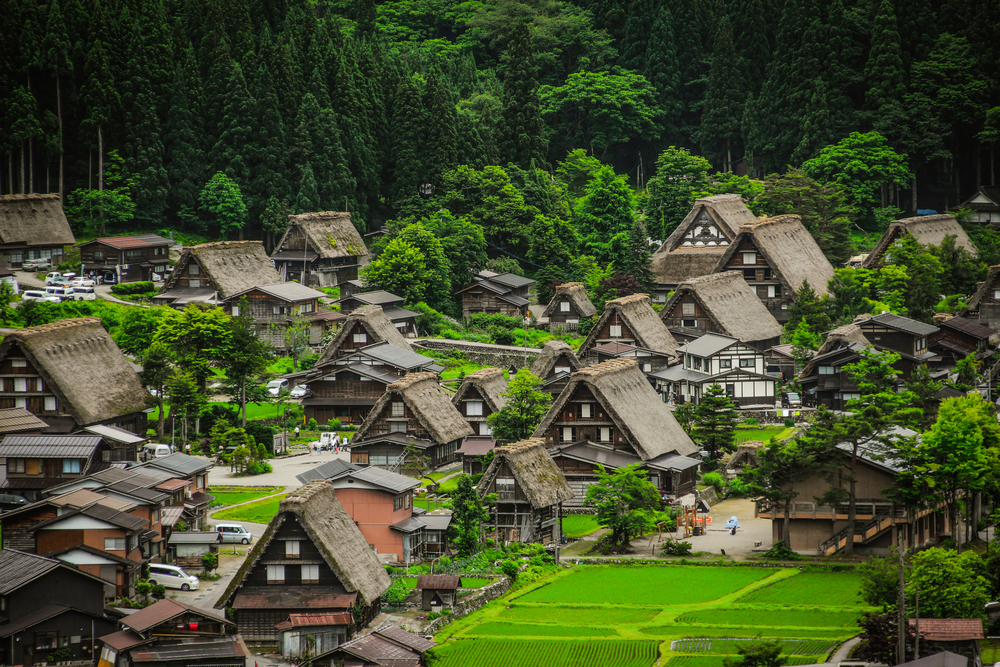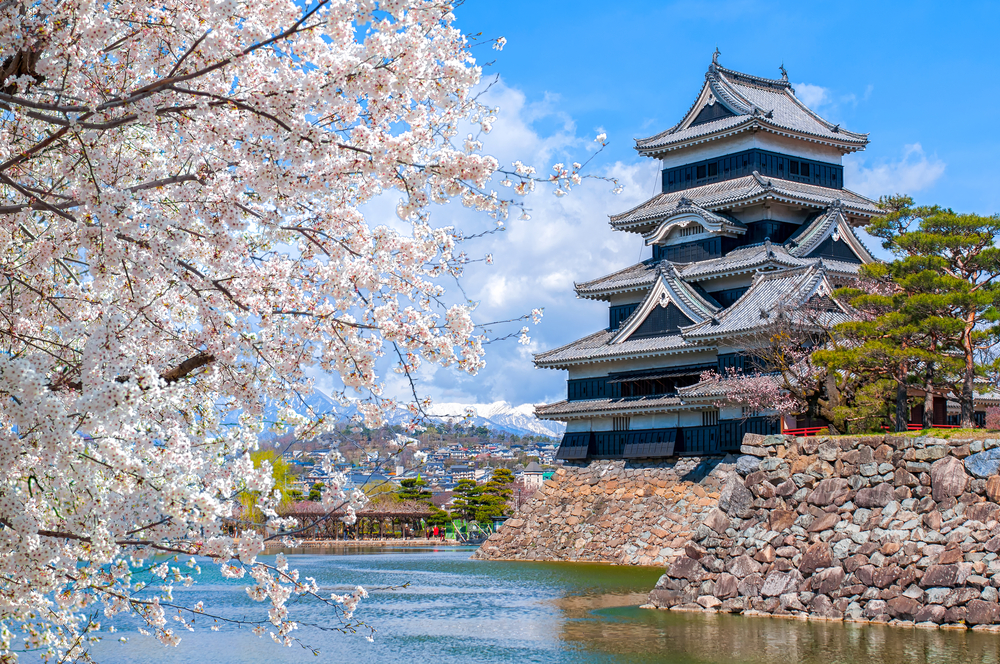
Shirakawago
In the region of Hida, Shirakawa-go Ogimachi village in Gifu prefecture, Gokayama Ainokura village and Suganuma village in Toyama prefecture are registered as a UNESCO World Cultural Heritage site.
Shirakawa-go is the biggest village among those 3 villages, and it is 2/3 of the World Heritage part, and there are 60 houses in total.
In Japanese, it is not simply "the village of the World Heritage", but it is registered under the name of "the village of Gassho style". The "Gassho" is the very unique thatched roofs of this region of World Heritage site.
Gassho style is one of the Japanese construction style and it is used for heavy snowfall region, and it is built by the combination of the logs alternately, steeply sloaped, thatched roofs that meet a high roof, which looks that "bringing the hands together to pray to the gods" which is "Gassho" in Japanese.
The design of the steaply sloaped roof is for that the snow piled up on the roof would easily sliding down.
The large garret created by those roofs was used for the shelves to raise silkworms. The sericultural industry is the principal industry in this region.
By the development of the sericultural industry, the roof was made higher and steeper to increase the space.
The roof is made without one single nail, and it is fixed by ropes but tough and flexible structure. The exposure of the house and the position of the window are fully calculated. This rational style of architecture is made by wisdom of ancestors.
The thatched roof maintains for 30-40years, but it is damaged by wind, rain and snow, so it is necessary to repair one or twice per year.
Changing the thatched roof is a great task so that all residents used to come to work together.
.jpg)
.jpg)
.jpg)
In the end of the 19th century, there were around 2,000 houses of Gassho style, but nevertheless, this style of architecture was exceptional and rare in Japan.
By the depopulation and by the constructions of the dams, many people left the villages, but as this region is located in the heavy snowfall area and
without the sufficient transportation facilities, the villages have been isolated from cities, and for this reason, some part of the villages were being maintained until today.
In due course, the actions of concerving the original and unique villages and rural landscape are started inside and outside of the villages, and finally, in 1994, they are registered as the 4th World Cultural Heritage site in Japan.
Today, it became a famed tourist spot but as the number of the souvenir stores and restaurants are increased, it is concerned that the original scenery of pastoral and calm mountain villages is vanishing.



Related blogs
- The extraordinary bay, Toyama Bay




























